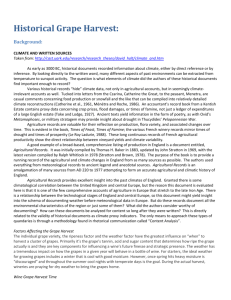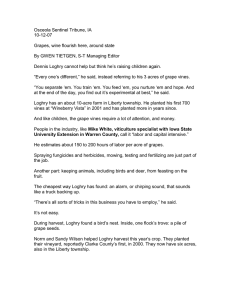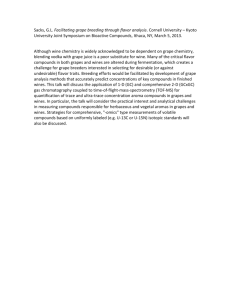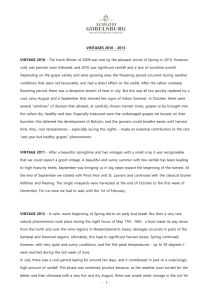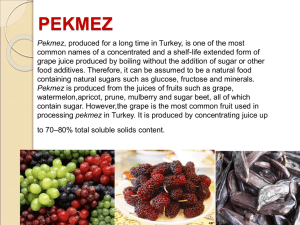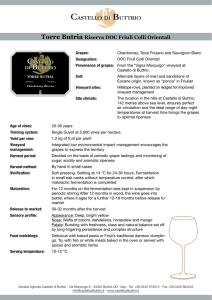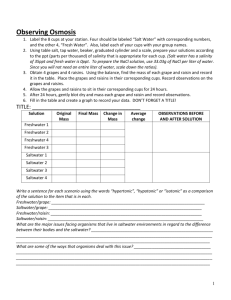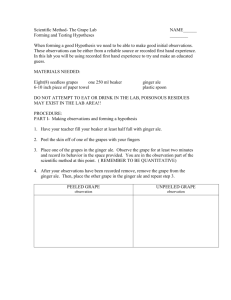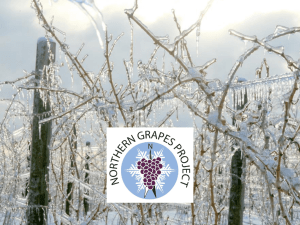Southern Interior Valley
advertisement
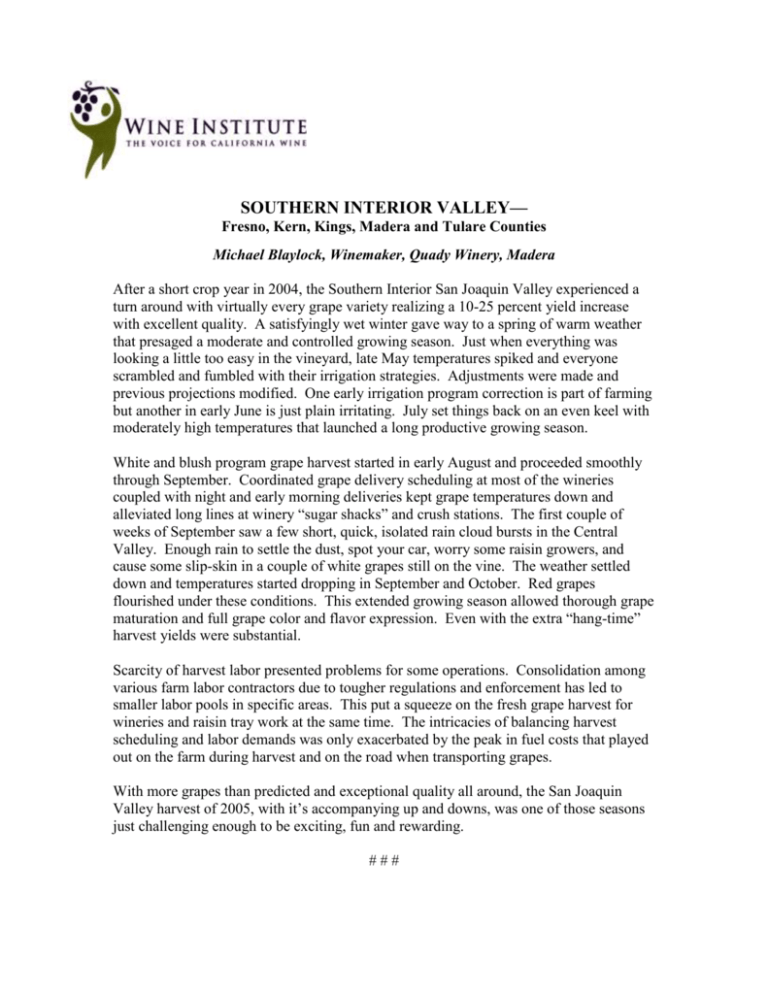
SOUTHERN INTERIOR VALLEY— Fresno, Kern, Kings, Madera and Tulare Counties Michael Blaylock, Winemaker, Quady Winery, Madera After a short crop year in 2004, the Southern Interior San Joaquin Valley experienced a turn around with virtually every grape variety realizing a 10-25 percent yield increase with excellent quality. A satisfyingly wet winter gave way to a spring of warm weather that presaged a moderate and controlled growing season. Just when everything was looking a little too easy in the vineyard, late May temperatures spiked and everyone scrambled and fumbled with their irrigation strategies. Adjustments were made and previous projections modified. One early irrigation program correction is part of farming but another in early June is just plain irritating. July set things back on an even keel with moderately high temperatures that launched a long productive growing season. White and blush program grape harvest started in early August and proceeded smoothly through September. Coordinated grape delivery scheduling at most of the wineries coupled with night and early morning deliveries kept grape temperatures down and alleviated long lines at winery “sugar shacks” and crush stations. The first couple of weeks of September saw a few short, quick, isolated rain cloud bursts in the Central Valley. Enough rain to settle the dust, spot your car, worry some raisin growers, and cause some slip-skin in a couple of white grapes still on the vine. The weather settled down and temperatures started dropping in September and October. Red grapes flourished under these conditions. This extended growing season allowed thorough grape maturation and full grape color and flavor expression. Even with the extra “hang-time” harvest yields were substantial. Scarcity of harvest labor presented problems for some operations. Consolidation among various farm labor contractors due to tougher regulations and enforcement has led to smaller labor pools in specific areas. This put a squeeze on the fresh grape harvest for wineries and raisin tray work at the same time. The intricacies of balancing harvest scheduling and labor demands was only exacerbated by the peak in fuel costs that played out on the farm during harvest and on the road when transporting grapes. With more grapes than predicted and exceptional quality all around, the San Joaquin Valley harvest of 2005, with it’s accompanying up and downs, was one of those seasons just challenging enough to be exciting, fun and rewarding. ###
